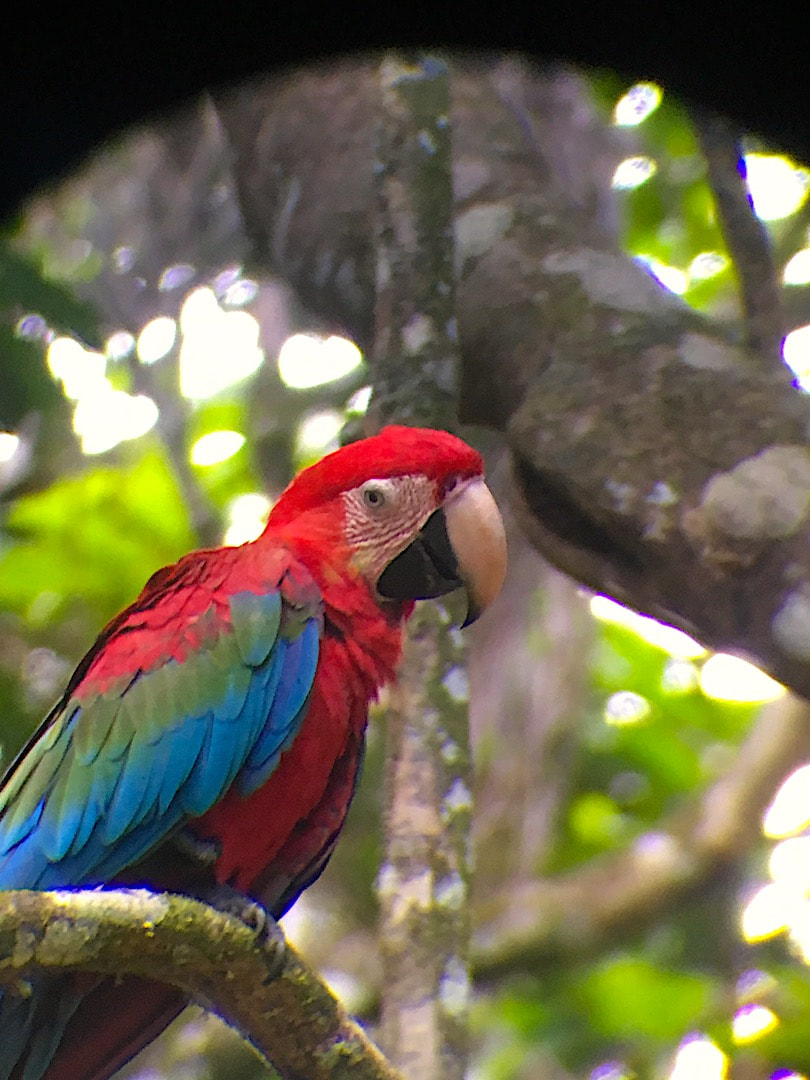|
Trying something new in order to get closer without disturbing: digiscoping. During the years I have been trying to improve my skills in photography and also invested in a quality camera with a good lens (Nikon D7200 & Sigma 150 - 500 mm). But still some animals are too far for my zoom lens so my next investment: a spotting scope. Here it is. It is not a Swarovski or a Leica spotting scope, but it still does the job so far (for now). It will surely also come in handy during my birdwatching tours as we can look at the bird up close and personal without disturbing it. Compared with my binocular it is less shaky and you have your hands free too by the way. I just purchased this spotting scope this year so I still am practicing. One of the things that I am trying to get handy in is: digiscoping (taking photo's with my iPhone attached to this spotting scope). This was my first trial: a Black Vulture getting soaking wet in the rain while resting in a tree. So I had to practice a lot and I noticed that digiscoping comes quite handy when it comes to subjects being very far. Here I photographed a female Black-throated Mango sitting in her nest. And I also spotted the Yellow-crowned Tyrannulet sitting in/on her nest with a nestling. With the naked eye you would not have seen the nest as it was so tiny. It also made it easy to observe her while raising the young chick. Three-toed Sloths usually like to rest in the top of the trees. I took this picture before it got dark and you can see that the sloth is already in a resting mode. But you also get the feeling that you are standing so close to them. This picture surely gives me a calm and resting feeling. That is what sloths usually do: rest, relax and sleep (it sure does look like that) The biggest challenge are by far birds. Quite often I have missed the feathered subjects. The moment that I wanted to photograph/film they flew away. But patience and a lot of trying will eventually make you succeed. It looks like I was standing right next to this Red-and-Green Macaw but the truth is that I was still grounded and he was at the top level.
It is still a lot of practice for me with the digiscoping: adjusting, attaching and focusing. But practice makes perfect. What makes it easier for me is using my headphone as a remote shutter release especially when it's windy or people nearby are passing by. The slightest movement makes the picture already blurry. But I also noticed that it is easier to film with the spotting scope, so now I am making short digiscoping documentaries about wildlife surrounding me. *Note: all the pictures (except the one of the spotting scope) were made via digiscoping. Comments are closed.
|
Archives
June 2024
Categories
All
|









 RSS Feed
RSS Feed